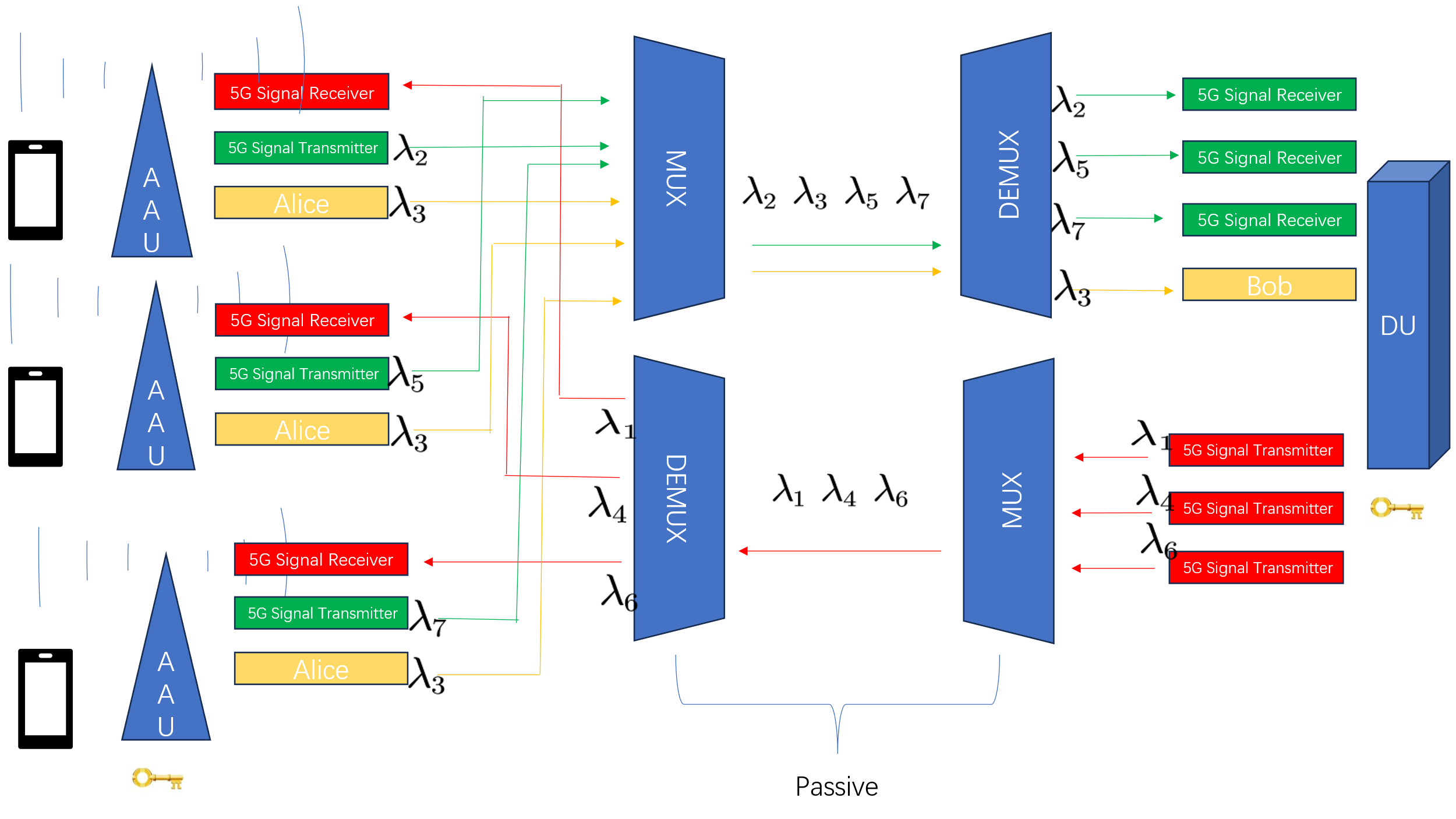

Volume 167
Published on June 2025Volume title: Proceedings of CONF-SEML 2025 Symposium: Strategic Learning in Machine Intelligence

With the global deployment of 5G networks, the demand for high bandwidth and low latency has driven innovations in fronthaul architectures. However, traditional solutions face challenges related to security and signal interference. This paper proposes an innovative quantum-enhanced converged wireless-fiber 5G fronthaul system that integrates quantum key distribution (QKD) technology with a passive wavelength division multiplexing (WDM) architecture to achieve physical-layer secure communication. The system deploys the quantum transmitter (Alice) at the active antenna unit (AAU) side and the receiver (Bob) at the distribution unit (DU) side, leveraging the Heisenberg Uncertainty Principle, quantum measurement collapse theory, and the no-cloning theorem to detect eavesdropping attempts. Simulation results demonstrate the significant impact of noise detection probability, fiber loss, and transmission distance on both the secure key rate and quantum bit error rate (QBER). Key findings highlight the need to minimize fiber loss, reduce transmission distance, lower filter loss, decrease noise detection probability, and improve detection efficiency. These optimizations collectively enhance the secure key rate while reducing the QBER, thereby improving overall system reliability. Remarkably, this solution achieves these security enhancements without requiring large-scale modifications to existing infrastructure, offering a practical and cost-effective upgrade path for current 5G deployments while providing a future-proof foundation for emerging 6G networks. The architecture’s inherent scalability and compatibility make it particularly suitable for high-security applications, including government communications, financial transactions, and critical infrastructure protection—bridging the gap between theoretical quantum security and practical wireless network implementation.

 View pdf
View pdf




